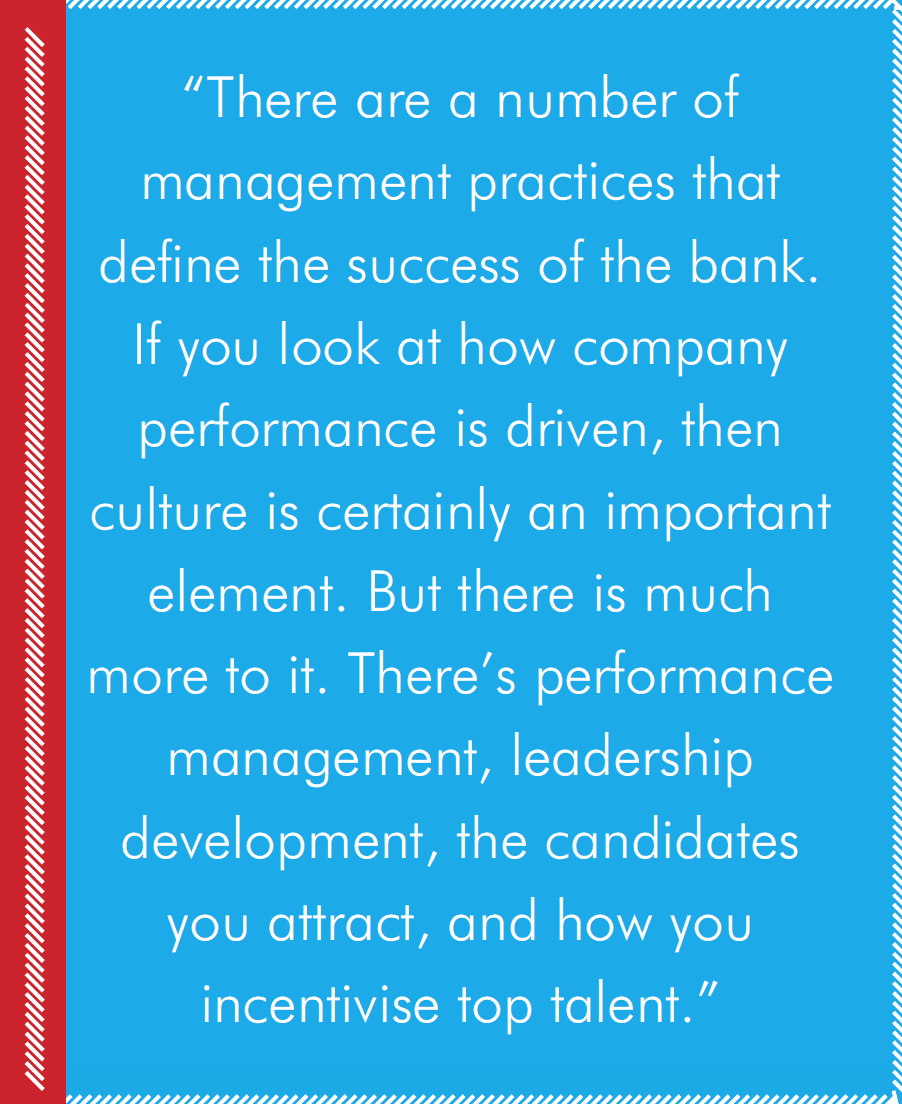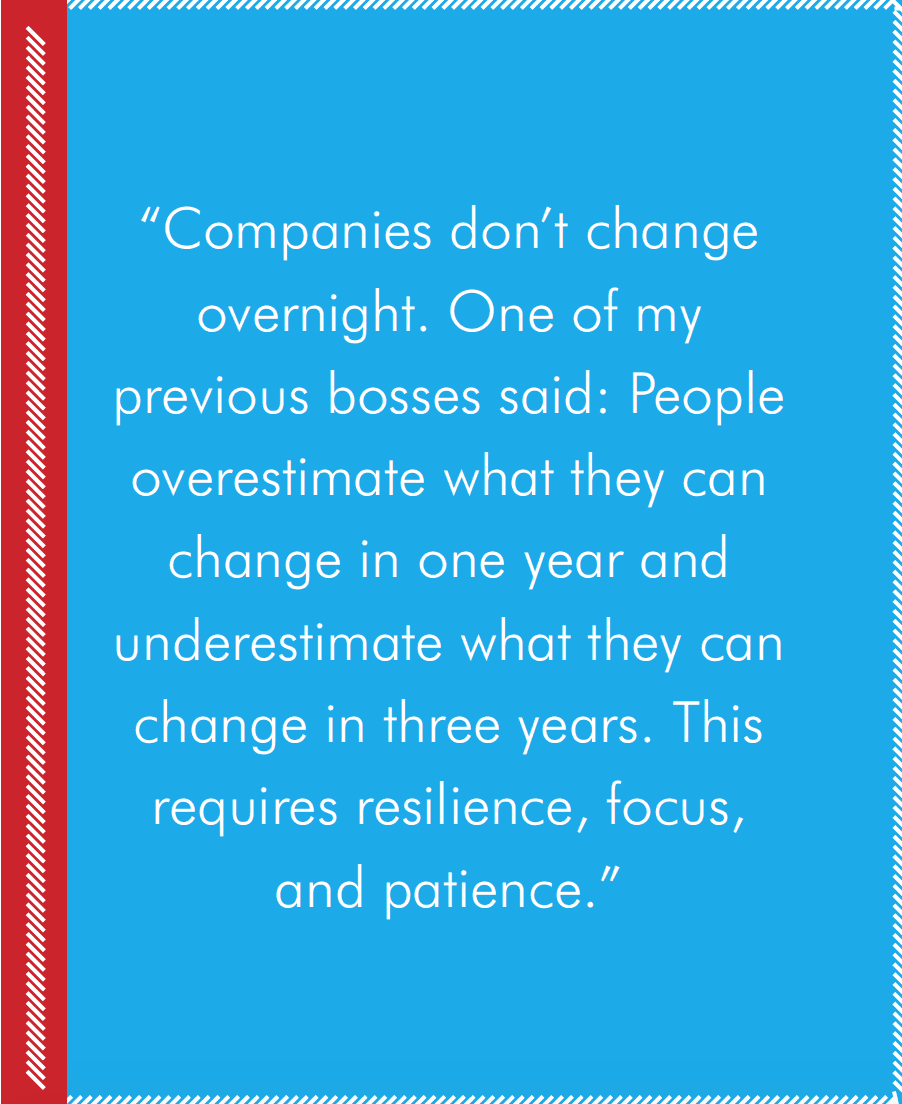CHRO Hein Knaapen shares how ING developed its Orange Code based on three employee practices and the success that followed.
By Debbie Bolla
Sometimes the key to success is simplicity. That less is more philosophy is a guiding force behind ING‘s highly visible “Orange Code,” which drives the organisation’s culture and human capital initiatives. The bank’s CHRO Hein Knaapen says although the three phrases of the “Orange Code” are simple, they encapsulate who ING is at the core. It is based on three elements:
- Take it on and make it happen
- Helping others to be successful
- Always stay a step ahead
“We’ve seen real success because we have touched on the real essence of the ING community,” he says. Here, Knaapen discusses the development of the “Orange Code” and its impact on culture, performance management, and leadership development as well as the new talent initiatives that he is banking on as a real value driver for 2019.
What behaviours drive the culture of “one ING” with one “Orange Code”?
Culture is a word we all love to use but the definition of culture is not always clear and it’s very subjective. This philosophy guided our interventions on culture. The thinking around culture and what we wanted to change in culture was essentially a very appreciative exercise. It started with celebrating what we are good at and then being precise about what we wanted to improve upon.
As an HR leader, if you want to change anything, you have to start with behaviours. But you also have to take into account that there are few things that are as pervasive as collective behaviours and culture so you have to be very precise about what you want to change. This is how and when the “Orange Code” emerged. We had an exercise in which 15,000 employees provided feedback to questions like: What are the behaviours we need in order to deliver on our new strategy? What behaviours should we get rid of? This exercise included outreach via mail, conferences, and individual conversations.
After a lot of processing, we zeroed in on three behaviours. The one-page document called the “Orange Code” sets out the values we expect at ING and which behaviours are linked to that. We analyse if we are delivering on this through our annual employee engagement survey and our organisational health survey. Put simply, the three behaviours are:
- Take it on and make it happen
- Helping others to be successful
- Always stay a step ahead

And we’ve seen real success because we have touched on the real essence of the ING community. I am seeing it repeated everywhere. One tool that we use, “Kudos,” allows employees to give recognition to another person. It’s an app that provides a platform to give concise compliments that are aligned to behaviours. People will say to each other: This is “Orange Code” behaviour.
Why did your performance management approach need to change and what results have you seen? How have employees responded?
There was widespread discontent among our employees about our performance management approach. It was also no longer seen as an essential tool for managers to drive the behaviour of their teams. It was not suited to differentiating and engaging employees for better performance. So we designed an entirely new practice, “Step Up Performance Management” (SUPM). We put performance management back where it belongs: with managers.
Since managers drive performance management, we needed to provide them with a simple framework for annual ambition settings, mid-year reviews, and annual reviews. They now also have to sit with their peer managers and agree about how they are going to appraise their people. The results of this are an understanding about what constitutes good performance and what constitutes great performance. This is emerging from the conversations between managers. And it’s working. We are running an organisational health index, which is a McKinsey tool, and it shows that our employees appreciate our performance management process much more than they did three years ago and they feel the quality has improved a lot. SUPM is an important lever of organisational change.
What drove the “Think-Forward Leadership Programme” (TFLP)?
TFLP was developed on many layers of feedback from the employee engagement survey, the organisational health index, senior management assessments, and our “Orange Code.” We asked ourselves: What do we think are the capabilities our leaders need in order to deliver on strategy? We discovered six:
- Self-awareness
- Personal ownership
- Collaboration
- Sustained high performance
- Talent development
- Performance transparency
We are currently leading 6,000 managers through the two phases of the leadership programme. Through the scores in our organisational health index, people tell us that our leadership has significantly improved.
What’s the common thread between SUPM and TFLP? We started to think about company performance and people initiatives. What we’ve learned is that whenever you initiate anything in people management, you must first establish a line of sight with company performance. At the end of the day, HR does all of this only for one reason: We want to improve company performance.
What is on your agenda for 2019?

In the realm of talent management, we have come to identify a number of critical roles. These roles are where the real value creation for the company happens. This approach, “Talent to Value,” is designed by Sandy Ogg of CEO.works. We worked together at Unilever and want to get it rolled out in ING. It’s a very structured, number-driven approach to the allocation of talent. It takes business understanding, rigor in your approach, and credibility with finance.
We are starting to look at those roles and their requirements very differently. We think if we are able to identify the roles where 75 per cent of value creation for the business comes from and identify talent for those roles with the right infrastructure, we will have a significant effect on the company performance. This is new thinking and we have to get ourselves familiar with it. Once it starts really becoming effective, it will add a lot to our repertoire of people solutions that drive company performance.














